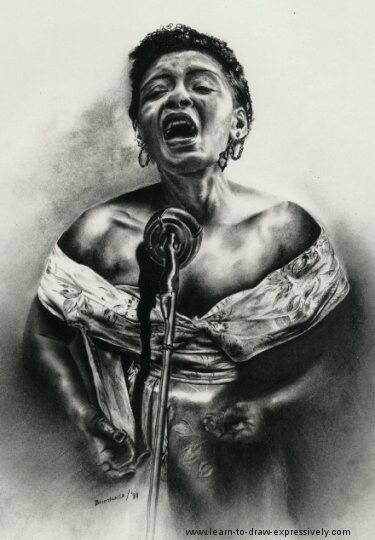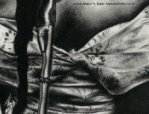Drawing Clothes
. . . a sense of touch
The important thing to remember when drawing clothes is that the folds in the clothing will be determined by the action of the body underneath. When the body moves, the folds move with it. Remember, there is logic to the pattern of the folds.
Prolonged observation reveals that there is a limited and repeated pattern of folds, which correspond to the movement of the body. Once these folds have been interpreted, then drawing the clothing becomes a study in fabric texture.
The most obvious points from which folds radiate are the bend at the elbow and the bend at the knee. Establish the major folds from such areas, and then look for the interesting pattern of wrinkles, which run off these major folds. These patterns can become very interesting and it’s up to you how far you want to take them.
Thick clothing hangs differently than does thinner material. (I’ll discuss this in my examples.)
Drawing Clothes ... the Details
If you really give clothing it's due attention, it adds power to your drawing. Look at the satin dress below.

This is a drawing of Billie Holiday, arguably the most influential singer in jazz history. One of the challenges in this drawing was to give the impression of an ornate satin dress. I wanted the dress to be detailed but not confusing, and I also wanted a clear distinction between the texture of the dress and the texture of the body.
Close attention is paid to the overall floral pattern of her dress. Parts of the dress are done with soft charcoal, which I smudge with either my finger, a watercolor brush, or a blending stump.
In contrast to that, I also use a hard HB charcoal pencil to impose clearly delineated sharp lines. These sharper lines give definition to the dress. I use so few of these hard-edged lines that they really stand out in contrast to the softer areas. If you use too many of these lines, the dress would become stilted and stiff.
As it is, we can see the ornate quality of the dress and we can also see the movement of her body underneath that dress.

Note the highlight on the dress midriff. It implies the shimmering quality of satin. (Your monitor may not show the subtle gradation from light to dark that is in the original drawing, but hopefully you'll still get the idea.)
This one highlight has a strong effect on the overall impact of the dress. When I started the drawing, I covered this area with removable tape so that the paper underneath would remain clean as I worked. (Inevitably there is always charcoal dust in the air.) When the complete drawing was done, my last step was to remove the tape and blend this area with a watercolor brush.
Notice the dark area directly under the highlight, which blends to a mid-tone. This is subtle but it implies the shape of her abdomen underneath the dress.

You can follow the "logical road map" of folds emanating from the bow in the center of her dress.

Notice the very subtle flower petals. I did them with a kneaded eraser so that they would not be too emphatic, but rather they would appear to be "peeking" through the surrounding shadowed areas.
When drawing clothes, this close attention to subtle detail reinforces the interest and the reality of the dress, and in turn, the whole drawing benefits.
Click here for more on the art of drawing clothes textures, or ...
To search my site for more on drawing clothes, enter your search term in the box below, and click on the Search button. (Google ads may appear at the top of the results page ... your search results will be just below.)




